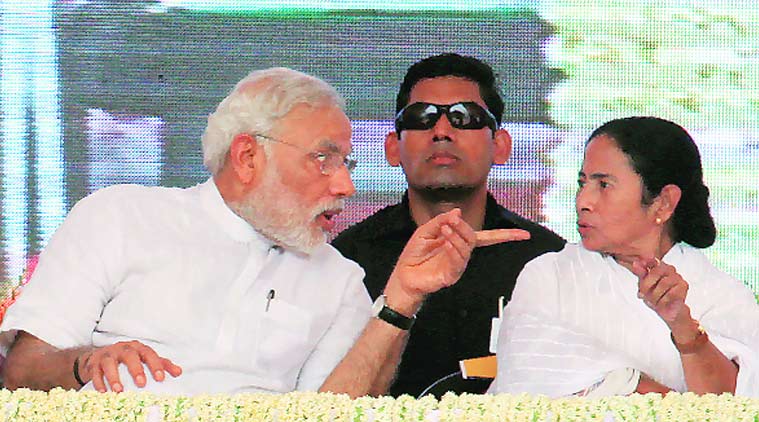 The political underpinnings of the devastation cannot be overlooked. One would think a cyclone, which received attention from all fronts including the Centre, would lead to a strong relief response in its aftermath. (File)
The political underpinnings of the devastation cannot be overlooked. One would think a cyclone, which received attention from all fronts including the Centre, would lead to a strong relief response in its aftermath. (File)
Written by Jigisha Bhattacharya
West Bengal has recently been devastated by Cyclone Amphan that ravaged through several districts of southern parts of the state, including the Bengal delta of the Sundarbans, on May 20. The cyclone also partially hit the coastal areas in Odisha and Bangladesh. The scale of Amphan has been unprecedented, even with a history of strong cyclones on the Bay of Bengal. Amphan has, reportedly, claimed more than a hundred lives and has directly affected more than six crore people in Bengal, and more than 45 lakh people in Odisha.
The cyclone has wiped away homes, ruined agricultural production, and affected the lives of a people already facing the woes of the longest lockdown in the world. The impact of Amphan has foregrounded pre-existing issues in need of prompt attention. The Bengal delta of Sundarbans, a UNESCO biosphere reserve, has been irreparably damaged; the images from the ground have featured islands submerged in saline water, mangrove forests ripped off, mud huts washed away, humans and Bengal tigers lying dead together.
The political underpinnings of the devastation cannot be overlooked. One would think a cyclone, which received attention from all fronts including the Centre, would lead to a strong relief response in its aftermath. However, after the prime minister’s aerial survey of the Amphan-affected areas, a package of just Rs1,000 crore has been announced as relief.
TMC Rajya Sabha MP Derek O’Brien has pointed out how the Centre owed West Bengal a total of Rs 53,000 crore (Rs 36,000 crore for central schemes, Rs 11,000 crore as devolution funds, about Rs 3,000 crore from GST dues and Rs 3,000 crore for other compensations) before Amphan. Such withholding of funds, especially in a time of crisis, can challenge the spirit of cooperative federalism.
Indeed, “packages” have been announced post-Amphan both at the Central and the state level. Even though reports from the ground suggest that the relief work by the state government has picked up significantly, there have been allegations of corruption in relief distribution. But the challenge of the pandemic has compounded the difficulties in rehabilitation.
Many civilian initiatives such as community kitchens, community healthcare centres and other volunteer groups had mobilised to assist the vulnerable during the pandemic. These initiatives were largely financed by crowdsourcing funds from fellow civilians. After Amphan, these funds have dried up significantly, as many who were contributing suffered losses as a result of the cyclone, in addition to lay-offs and pay-cuts engendered by the pandemic. Thus, the relief initiatives in the aftermath of Amphan are facing twin adversities – firstly, the funds are inadequate, and secondly, the traffic from the erstwhile red zone of Kolkata to the interiors of Sundarbans has increased the risk of COVID infection. The volunteer medical camps conducted by doctors and healthcare workers within the affected areas are having to tackle common and chronic ailments, alongside the coronavirus.
Even under usual circumstances, a majority of the population in the Sundarbans live a precarious life between land and water, amidst the constant perils of tigers, snakes and crocodiles. The mangroves have for years been a buffer for the mainland against the wrath of the cyclones. Despite strong opposition from experts and locals, developmental projects sanctioned within the Sundarbans have appropriated forests and lands, diminishing their role as a buffer. An example is the recent sanction for the cross-border Rampal Power Station. Also, the dykes and dams that have been constructed before and after cyclone Aila (2009) have been inadequate at best. The inflow of saline water has left large tracts of land unsuitable for cultivation.
These concerns raised by locals have been ignored, and the response to Amphan has suffered as a result of not listening to them. The disaster has received little sustained national attention, and the Centre’s lukewarm, response seems not to have been highlighted.
There has been justified criticism of those trying to “politicise” the disaster. But foregrounding the concerns raised by the most affected in a disaster becomes necessary to hold elected governments — at all levels — and their policies accountable. Politicising natural disasters can highlight the failures of governments.
Trying to take politics out of government in such cases only strengthens apathy and decreases accountability. Correctly done, there is a need to politicise natural disasters.
The writer teaches English at O P Jindal University